On the morning of March 27, Vinh Bao district (Hai Phong) announced the Decision approving the Planning for the restoration and renovation of the special national relic of Nguyen Binh Khiem Temple to preserve, embellish and promote the value of the relic, contributing to educating the tradition of studiousness and forming a unique historical and cultural tourist destination of Vinh Bao district and Hai Phong city.
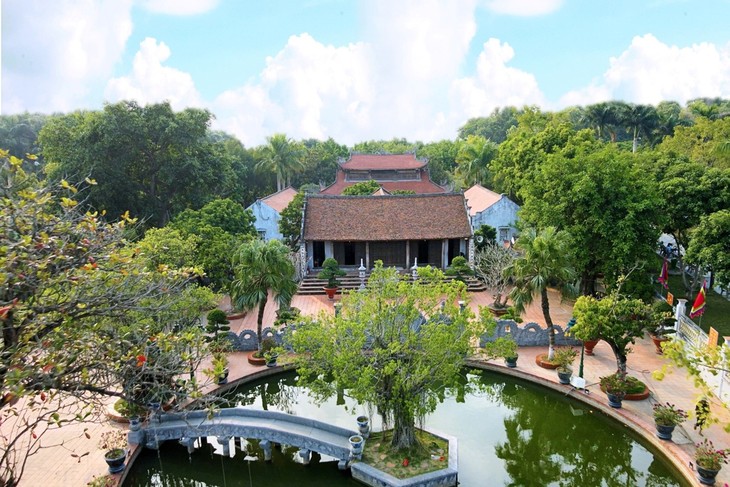 |
Panoramic view of Nguyen Binh Khiem temple relic. Photo: Vinh Bao District People's Committee. |
A place to remember the famous Trạng Nguyên in Vietnamese history
According to historical documents, Trang Trinh Nguyen Binh Khiem was born in the year of Tan Hoi (1491), from Trung Am village, Vinh Lai district, Hai Duong town (now Trung Am village, Ly Hoc commune, Vinh Bao district, Hai Phong). His given name was Van Dat, his courtesy name was Hanh Phu, his pen name was Bach Van Cu Si. In the examination year of At Mui, under the reign of Mac Dang Doanh (1535), he passed the first-class Doctorate exam (ie Trang Nguyen), was awarded the title of Dong Cac Hieu Thu, and gradually promoted to Huu Thi Lang and Dong Cac Dai Hoc Si.
Nguyen Binh Khiem was listed as one of the first meritorious officials, was awarded the title of Trinh Tuyen Marquis, Minister of the Ministry of Personnel, Thai Bao, and Trinh Quoc Cong. In 1542, after submitting a petition to behead 18 corrupt officials that was not approved, he retired from office and returned to his hometown to live in seclusion, built Trung Tan inn, established Bach Van hermitage as a school, composed poetry, and took the name Bach Van hermitage. The hermitage became a center for training talented people for the country, with many names recorded in history, such as: Phung Khac Khoan, Luong Huu Khanh, Giap Hai...
Although Nguyen Binh Khiem no longer participated in national affairs, the Mac Dynasty still respected him and often asked for his opinion on important matters. He died on November 28, At Dau year (January 17, 1586), at the age of 95. His students honored him as Tuyet Giang Phu Tu.
Not only was he a patriotic Confucian scholar, a great philosopher who was respected by scholars, recorded in history books and passed down through the generations for his ability to predict future events (prophecies)... Trang Trinh Nguyen Binh Khiem was also a great poet, leaving behind over 1,000 poems (620 poems in Chinese characters, 153 poems in Nom characters), typically the poetry collections "Bach Van am thi tap" (Chinese characters) and Bach Van quoc ngu thi tap (Nom characters). Nguyen Binh Khiem's poems have high artistic value, profound writing style, and deal with many issues of life, such as: love for homeland, country, satirizing and criticizing corrupt officials...
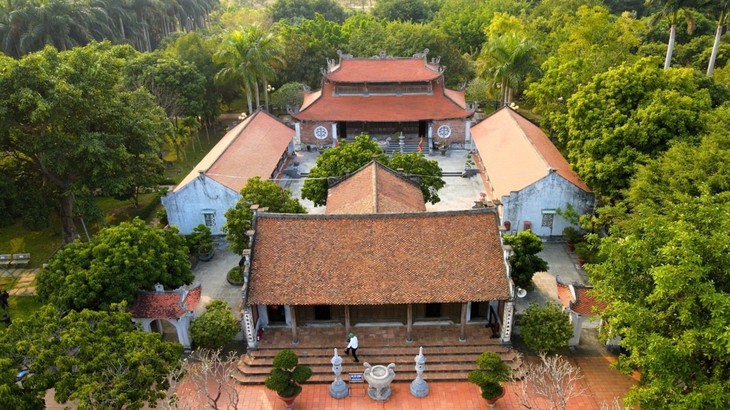 |
The central structures of the Nguyen Binh Khiem temple relic. Photo: Vinh Bao District People's Committee. |
The temple contains many cultural values.
The stele "Tu Vu bi ky..." erected in the second year of Vinh Huu (1736) currently preserved at the site records that the temple to worship Nguyen Binh Khiem was built after the death of Trang Trinh Nguyen Binh Khiem. In 1735, the people of Trung Am village, Thuong Am commune contributed labor and money to renovate and embellish the temple for worship. In 1928, the temple continued to be restored, bearing the bold artistic style of the Nguyen Dynasty. In 1991, on the occasion of the 500th anniversary of Nguyen Binh Khiem's birth, the site was renovated, restored, expanded, a monument was erected, a square was established, and a crescent lake was built, with the scale and landscape as it is today.
According to the Department of Cultural Heritage, Nguyen Binh Khiem Temple is located in a large space, facing East, with a lake in front, a dike and Tuyet Giang River in the North, a view of the vast ocean in the East, a village in the South, and green rice and tobacco fields in the West. The temple has a total area of 91,500.7 m2, including the following items: Nguyen Binh Khiem Temple; Nguyen Binh Khiem's Father and Mother Temple; Bach Van Hermitage; Trung Tan Temple; But Kinh Thien Tower; Nguyen Van Dinh's tomb; square and monument.
In which, Nguyen Binh Khiem Temple is the central structure, with a "T" shaped layout with a front hall of 3 compartments and 2 wings and a rear hall of 2 compartments. The front hall has a middle compartment of 3.17 m wide, two side compartments each 2.8 m wide and two wings each 2.1 m wide. The load-bearing frame system has 4 trusses, 22 ironwood columns. The roof truss is structured in the style of "gong rack overlapping beams". Decorative motifs, on the body of the beams and the first beams are carved with the theme of flipped leaves, the pillars are carved with lotus petals, the first beam is engraved with an inscription stating that the temple was renovated in 1928, during the reign of King Bao Dai. The four remaining ends are carved with a combination of four dragon-headed channels in the style of the Nguyen Dynasty in the early 20th century. The two sides of the "van me" armpit beams are densely and meticulously decorated, with dragon themes combined with cloud patterns, flipped leaves, water waves, seal script patterns, lotus flowers and leaves, water waves, carp, and dragon transformation patterns.
The rear palace has a gable wall style, the load-bearing frame system consists of two sets of trusses, the roof trusses and the armpit trusses are all connected in the "plank" style. The decorative motifs on the truss system are two dragons facing the sun, apricot trees, lotus branches, turtles, dragon horses... The second set of trusses has a variation of the "gong rack stacked on beams" style. In the forbidden palace, there is a shrine and a statue of Nguyen Binh Khiem.
Nguyen Binh Khiem Temple still preserves a number of valuable antiques, dating from the 17th to the early 20th century, such as a testament, eight treasures, a throne, ancestral tablets, parallel sentences, large characters..., of which the most notable is the stone stele "Tu vu bi ki..." from the Le Trung Hung period, the second year of Vinh Huu (1736) which has many blurred words, the entire text cannot be read, the content of the stele mentions the rebuilding of Nguyen Binh Khiem Temple in 1736 and an 18th century yellow-brown ceramic incense burner... In addition, the temple also preserves a rectangular green stone block, engraved with 3 Chinese characters "Truong Xuan Kieu" (Truong Xuan Bridge), said to have been personally written by Nguyen Binh Khiem when encouraging local people to build the bridge.
Nguyen Binh Khiem Temple also contains many unique intangible cultural values, demonstrating the important role of this relic in the consciousness and spiritual life of local people. The Trang Temple Festival is held from the 27th to the 29th of the 11th lunar month every year, with rituals such as the Moc Duc Ceremony, the Procession of Literature, the Proclamation of the Declaration and many cultural and artistic programs of the localities (wrestling, chess, the Four Sacred Animals dance, boat racing, clay cannons, swinging on the river/duck dancing, dry puppetry, water puppetry). In addition, every year, on the occasion of the opening of the new school year, Hai Phong city also organizes a ceremony to honor outstanding students, right at Nguyen Binh Khiem Temple. This is a new cultural feature, demonstrating the tradition of respecting teachers, educating about the shining example of Nguyen Binh Khiem, motivating the young generation to strive on the path of studying and starting a career.
With its special typical values, the historical relic of Nguyen Binh Khiem Temple in Vinh Bao district, Hai Phong city was ranked as a special national relic by the Prime Minister in Decision No. 2367/QD-TTg dated December 23, 2015).
Source: https://khoahocdoisong.vn/di-tich-quoc-gia-dac-biet-vua-duoc-quy-hoach-tu-bo-o-hai-phong-post267138.html


![[Photo] General Secretary To Lam arrives in Minsk, begins state visit to Belarus](https://vphoto.vietnam.vn/thumb/1200x675/vietnam/resource/IMAGE/2025/5/11/76602f587468437f8b5b7104495f444d)

![[Photo] General Secretary To Lam concludes visit to Russia, departs for Belarus](https://vphoto.vietnam.vn/thumb/1200x675/vietnam/resource/IMAGE/2025/5/11/0acf1081a95e4b1d9886c67fdafd95ed)






![[Video] Bringing environmental technology from the lab to life](https://vphoto.vietnam.vn/thumb/402x226/vietnam/resource/IMAGE/2025/5/11/57d930abeb6d4bfb93659e2cb6e22caf)
![[Video] Product risk classification: Solution to reform quality management, reduce burden for businesses](https://vphoto.vietnam.vn/thumb/402x226/vietnam/resource/IMAGE/2025/5/11/cbcd6b50805549a5bbb9e8e6354eda70)











![[Photo] National Assembly Chairman Tran Thanh Man attends the Party Congress of the Committee for Culture and Social Affairs](https://vphoto.vietnam.vn/thumb/1200x675/vietnam/resource/IMAGE/2025/5/11/f5ed02beb9404bca998a08b34ef255a6)






























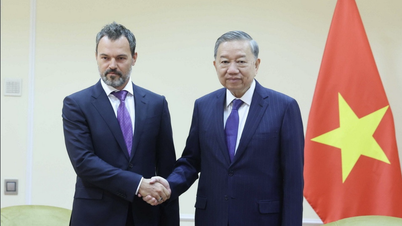

















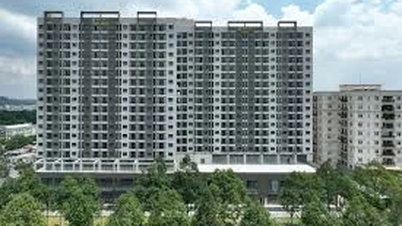

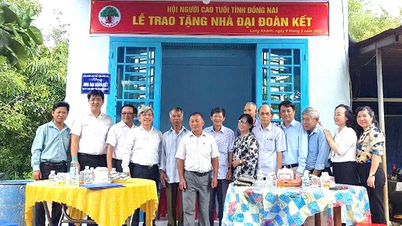












Comment (0)